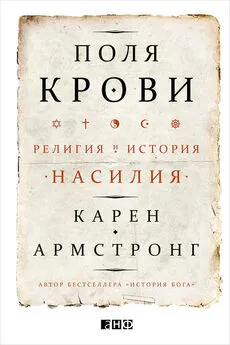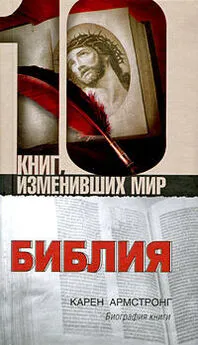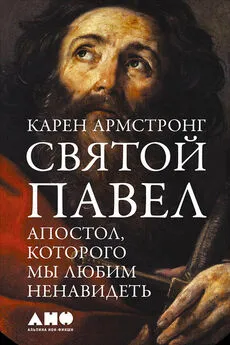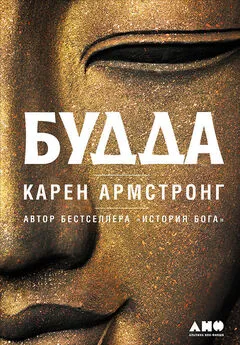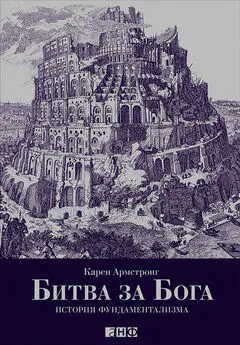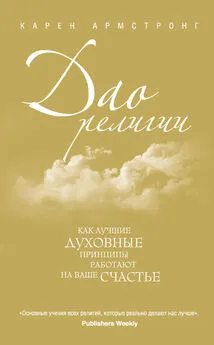Карен Армстронг - Поля крови. Религия и история насилия
- Название:Поля крови. Религия и история насилия
- Автор:
- Жанр:
- Издательство:Array Литагент «Альпина»
- Год:2016
- Город:Москва
- ISBN:978-5-9614-4082-9
- Рейтинг:
- Избранное:Добавить в избранное
-
Отзывы:
-
Ваша оценка:
Карен Армстронг - Поля крови. Религия и история насилия краткое содержание
Поля крови. Религия и история насилия - читать онлайн бесплатно ознакомительный отрывок
Интервал:
Закладка:
177
Ригведа , 1.32.5
178
Шатапатха Брахмана (ШБ), 6.8.11. см.: английский перевод в: J. C. Heesterman, The Broken World of Sacrifice: An Essay in Ancient Indian Religion (Chicago and London, 1993), p. 123
179
Ригведа , 8.16.1; 8.95.6; 10.38.4
180
Whitaker, Strong Arms , pp. 3–5; 16–23; Catherine Bell, Ritual Theory, Ritual Practice (New York, 1992), pp. 180–81, 221
181
Renou, Religions of Ancient India , p. 6; Witzel, ‘Vedas and Upanishads’, p. 73
182
Whitaker, Strong Arms , pp. 115–17
183
Ср. Ригведа , 2.22.4
184
Ригведа , 3.31; 10.62.2
185
Witzel, ‘Vedas and Upanishads’, p. 72
186
Doniger, Hindus, p. 114
187
Heesterman, ‘Ritual and Revelation, ’ p. 403
188
ШБ 7.1.1.1–4, см.: Mircea Eliade , The Myth of the Eternal Return or Cosmos and History, trans. Willard R. Trask (Princeton, 1974), pp. 10–11
189
Майтраяни-самхита , 4.2.1.23.2; см.: Heesterman, Broken World , pp. 23–24; 134–37
190
ШБ 2.2.2.8–10; Heesterman, Broken World , p. 24
191
Georges Dumézil, The Destiny of the Warrior , trans. Alf Hiltebeitel (Chicago and London, 1970), pp. 76–78
192
John H. Kautsky, The Political Consequences of Modernization (New Brunswick and London, 1997), pp. 25–26
193
Whitaker, Strong Arms , p. 158
194
Louis Renou, ‘Sur la Notion de “brahman” ’, Journal Asiatique , 237 (1949); Jan Gonda, Change and Continuity in Indian Religion ( The Hague, 1965), p. 200
195
Ригведа , 1.164.46. Гарутмант – это солнце
196
Ригведа , 10.129. 6–7
197
Jan Gonda, The Vision of the Vedic Poets (The Hague, 1963), p. 18
198
Renou, Religions of Ancient India , pp. 220–25; R. C. Zaehner, Hinduism (London, New York and Toronto, 1962), pp. 219–25
199
Ригведа , 10. 90
200
Ibid., 10.90. [Перевод Т. Елизаренковой. Цит. по: Ригведа. Мандалы IХ – X . – М.: Наука, 1999. – Прим. пер .]
201
Bruce Lincoln, ‘Indo-European Religions: An Introduction’, in Death, War and Sacrifice: Studies in Ideology and Practice (Chicago and London, 1991), p. 8
202
Bruce Lincoln, ‘Sacrificial Ideology and Indo-European Society’, in Death, War and Sacrifice , p. 173
203
Thapar, Early India , p. 123
204
Lincoln, ‘Sacrificial Ideology’, pp. 174–75
205
Ibid., pp. 143–47
206
Reinhard Bendix, Kings or People: Power and the Mandate to Rule (Berkeley, 1977), p. 228
207
Max Weber, The Religion of India: The Sociology of Hinduism and Buddhism , trans. and ed. Hans H. Gerth and Don Martindale (Glencoe, Ill., 1951), p. 65
208
Alfred Vogts, A History of Militarism: Civilian and Military , rev. ed. (New York, 1959), p. 42
209
Панчавимша-брахмана (ПБ), 7.7: 9–10, см.: Heesterman, Broken World , p. 62
210
ШБ 6.8.14; Heesterman, ‘Ritual, Revelation and the Axial Age’, p. 402
211
J. C. Heesterman, The Inner Conflict of Tradition: Essays on Indian Ritual, Kingship and Society (Chicago and London, 1993) pp. 68, 84–85
212
Ригведа , 1.162.20–21; ср. английский перевод Гриффитса
213
Таиттирия-самхита (ТС), 6.4.8.1; см.: Heesterman, Inner Conflict , p. 209
214
Таиттирия-брахмана (ТБ), 3.7.7.14; см.: Heesterman, Broken World , p. 34
215
Witzel, ‘Vedas and Upanisads’, p. 82
216
Шатапатха Брахмана , 10.6.5.8; см.: Heesterman, Broken World , p. 57
217
Zaehner, Hinduism , pp. 59–60; Renou, Religions of Ancient India , p. 18; Witzel, ‘Vedas and Upanisads’, p. 81 Brian K. Smith, Reflections on Resemblance, Ritual and Religion (Oxford and New York, 1989), pp. 30–34, 72–81
218
Jonathan Z. Smith, ‘The Bare Facts of Ritual’, in Imagining Religion: From Babylon to Jonestown (Chicago and London, 1982), p. 63
219
Doniger, Hindus , pp. 137–42; Gavin Flood, An Introduction to Hinduism (Oxford, 2003), pp. 80–81
220
Thapar, Early India , pp. 150–52
221
Законы Ману , 7.16–22; см.: перевод G. Buhler (Delhi, 1962). [Перевод С. Эльмановича, проверенный и исправленный Г. Ильиным. Цит. по: Законы Ману . – М.: Наука, 1992. – Прим. пер .]
222
Thapar, Early India , pp. 147–49; Doniger, Hindus , pp. 165–66.
223
Thapar, Early India , p. 138.
224
Hermann Kulke, ‘The Historical Background of India’s Axial Age’, in S. N. Eisenstadt, ed., The Origins and Diversity of Axial Age Civilizations (Albany, NY, 1986), p. 385
225
Thapar, Early India , p. 154
226
Richard Gombrich, Theravada Buddhism: A Social History from Ancient Benares to Modern Colombo (London and New York, 1988), pp. 55–56
227
Ibid., pp. 58–59; William H. McNeill, Plagues and Peoples (Garden City, NY, 1976), p. 60; Patrick Olivelle, ed. and trans., Samnayasa Upanisads: Hindu Scriptures on Asceticism and Renunciation (New York and Oxford, 1992), p. 34; Doniger, Hindus , p. 171
228
Thomas J. Hopkins, The Hindu Religious Tradition (Belmont, Calif.,1971), pp. 50–51; Doniger, Hindus , p. 165
229
Чхандогья Упанишада , 5.10.7. Английский перевод Упанишад см.: в: Patrick Olivelle, ed., Upanisads (Oxford and New York). Ср. Брихадараньяка Упанишада , 4.4.23–35; Thapar, Early India , p. 130
230
Olivelle, Samnayasa Upanisads , pp. 37–38
231
Olivelle, Upanisads , p. xxix; Witzel, ‘Vedas and Upanisads’, pp. 85–86
232
Брихадараньяка Упанишада , 1.4.6. [Перевод А. Сыркина. Здесь и далее Цит. по: Брихадараньяка Упанишада . – М.: Наука, 1992. – Прим. пер. ]
233
Брихадараньяка Упанишада , 1.4.10
234
Брихадараньяка Упанишада , 4.4.6
235
Брихадараньяка Упанишада , 4.4.23
236
Чхандогья Упанишада , 8:7–12
237
Чхандогья Упанишада , 6.12.1–3
238
Чхандогья Упанишада , 6.9
239
Чхандогья Упанишада , 6.13
240
Чхандогья Упанишада , 6.10
241
Thapar, Early India , p. 132
242
Flood, Introduction to Hinduism , p. 91; Patrick Olivelle, ‘The Renouncer Tradition’, in Gavin Flood, ed., The Blackwell Companion to Hinduism (Oxford, 2003) p. 271
243
Steven Collins, Selfless Persons: Imagery and Thought in Theravada Buddhism (Cambridge, UK, 1982), p. 64 Paul Dundas, The Jains , 2nd ed. (London and New York, 2002), p. 64
244
Heesterman, Broken World , pp. 164–74; Gonda, Change and Continuity , pp. 228–35; 285–94
245
Gonda, Change and Continuity , pp. 380–84; Patrick Olivelle, ‘The Renouncer Tradition’, pp. 281–82
246
Дигха-никая ; см.: Olivelle, Samnyasa Upanisads , p. 43
247
Нарадапаравриджка Упанишада , 143; см.: Olivelle, Samnyasa Upanisads, p. 108
248
Ibid., p. 185
249
A. Ghosh, The City in Early Historical India (Simla, 1973), p. 55; Olivelle, Samnyasa Upanisads , pp. 45–46
250
Mircea Eliade, Yoga, Immortality and Freedom , trans. Willard Trask (London, 1958) pp. 59–62. (Элиаде М. Йога. Бессмертие и свобода. – М.: Академический проект, 2014.)
251
Патанджали, Йога-сутра , 2.42; см.: Eliade, Yoga , p. 52
252
Dundas, Jains , pp. 28–30
253
Ibid., pp. 106–07
254
Ачаранга-сутра , 1.4.1.1–2, см.: Dundas, Jains , pp. 41–42
255
Ачаранга-сутра , 1.2.3, ibid.
256
Авашьяка-сутра , 32, ibid., p. 171
257
Раньше западные исследователи полагали, что Будда родился около 563 г. до н. э. Однако современная наука склоняется к мысли, что он жил примерно столетием позже. см.: Heinz Berchant, ‘The Date of the Buddha Reconsidered’ , Indologia Taurinensin , 10, n. d.
258
Интервал:
Закладка:
